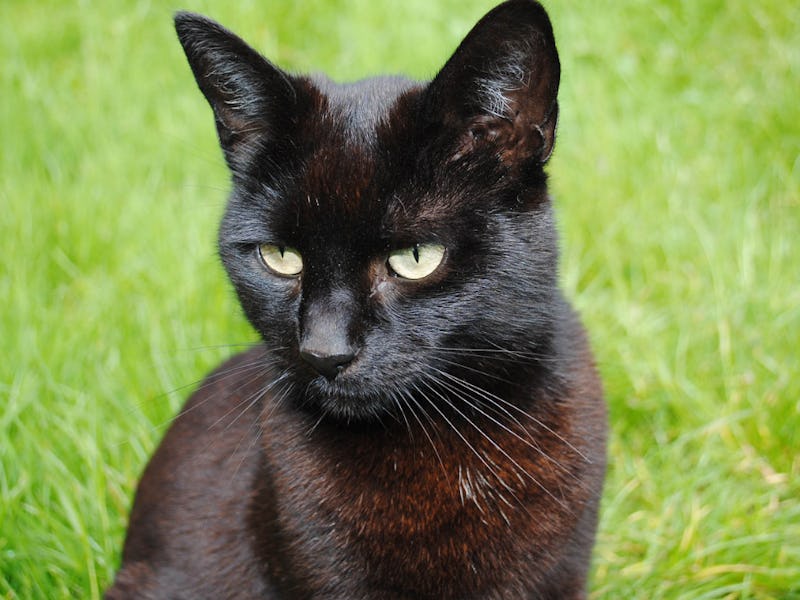Cue up Janet Jackson’s “Black Cat” because today is #BlackCatAppreciationDay.
You might be thinking, “wait, the best day of the year isn’t until October” but no my friend, that is the United Kingdom’s own National Black Cat Day. Both are alike in giving pet owner’s the excuse to share cat glamor shots publicly and in giving people the opportunity to remind the world that black cats are, in fact, not evil.
This prejudice is long standing. Back in 1233 Pope Gregory IX, a major hater, said Satan was a horny enough devil that he would disguise as a black cat to get into orgies. This devil-connection really made life rough for black cats in the following centuries — they were incinerated by 17th century Parisians, considered something to be “dreaded” in early American folklore, and a sign of bad things to come well into the 19th century.
Black cats still have to deal with this shit today. A 2012 University of California, Berkeley study found that people still were biased against black cats. While a sample of 189 people gave human traits like “friendliness” to orange cats and “intolerance” to tricolor cats, black cats were described as “creepy.” This had led to statistical evidence that black cats are adopted less than their tabby peers. From this Thursday until August 21, the ASPCA is waiving all adoption fees in an effort to combat the stigma.
But black cats are a better option for science lovers as well: Black cats have a higher than normal amount of melanin in their bodies — the dark pigment that shows up in animal and human hair and skin — which causes their eyes to become that golden hue. You can also do fun things with your cat like teach it to poop in a toilet. And why keep making yourself happy with cat videos when you could be bonding with a real cat in front of you?
That is, of course, unless you think this is really really scary:
